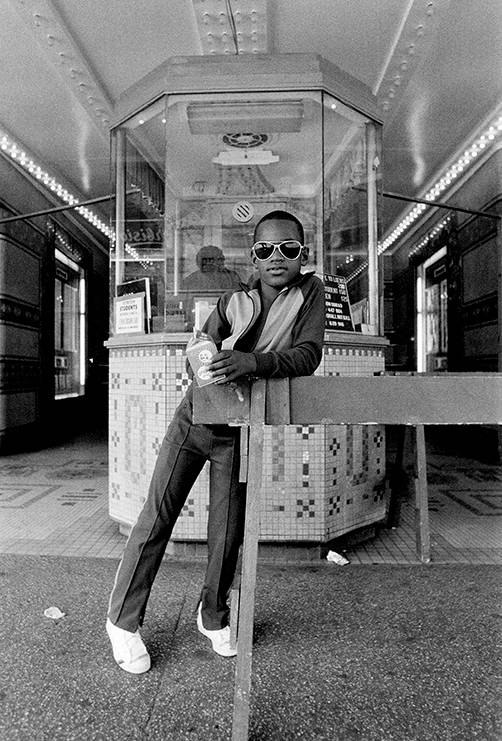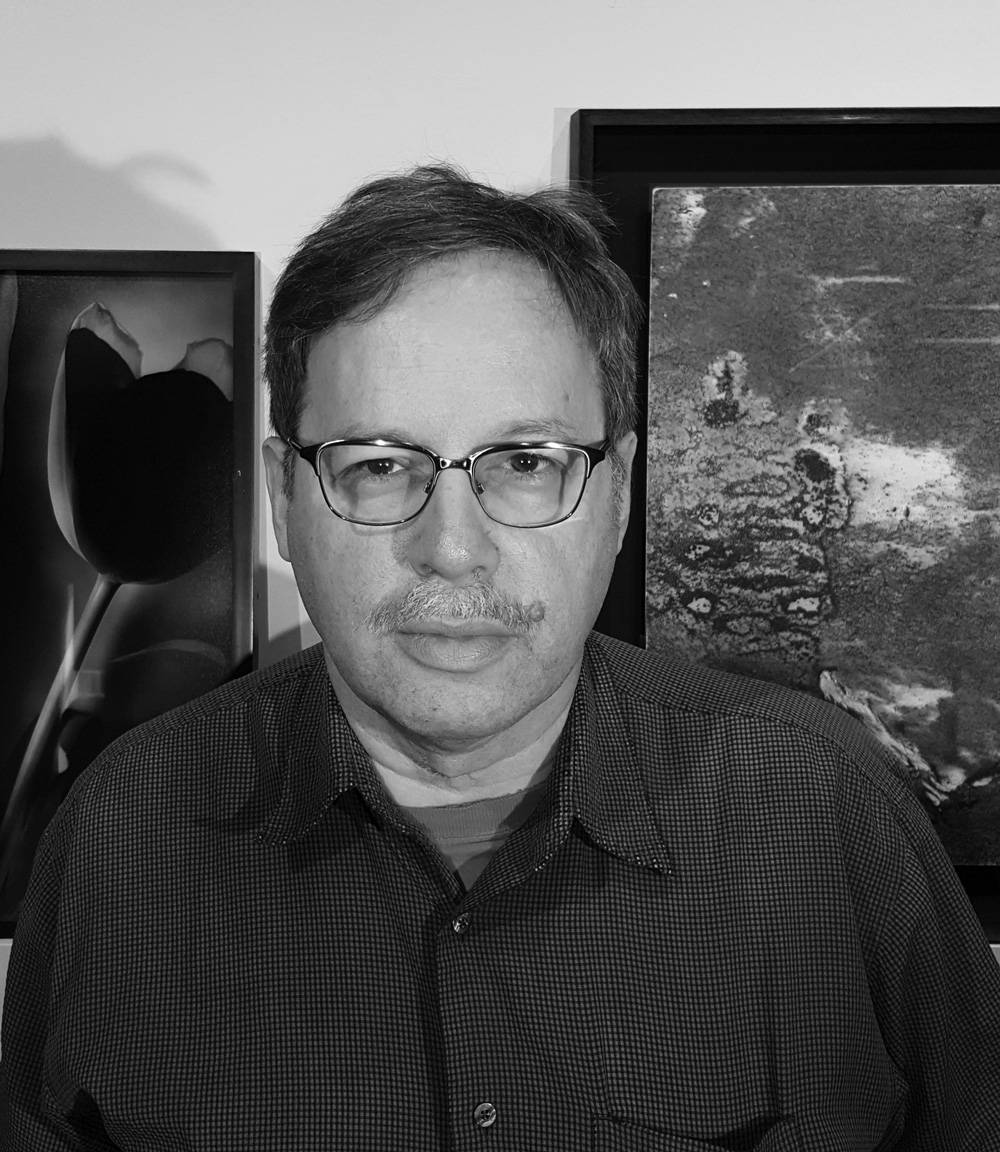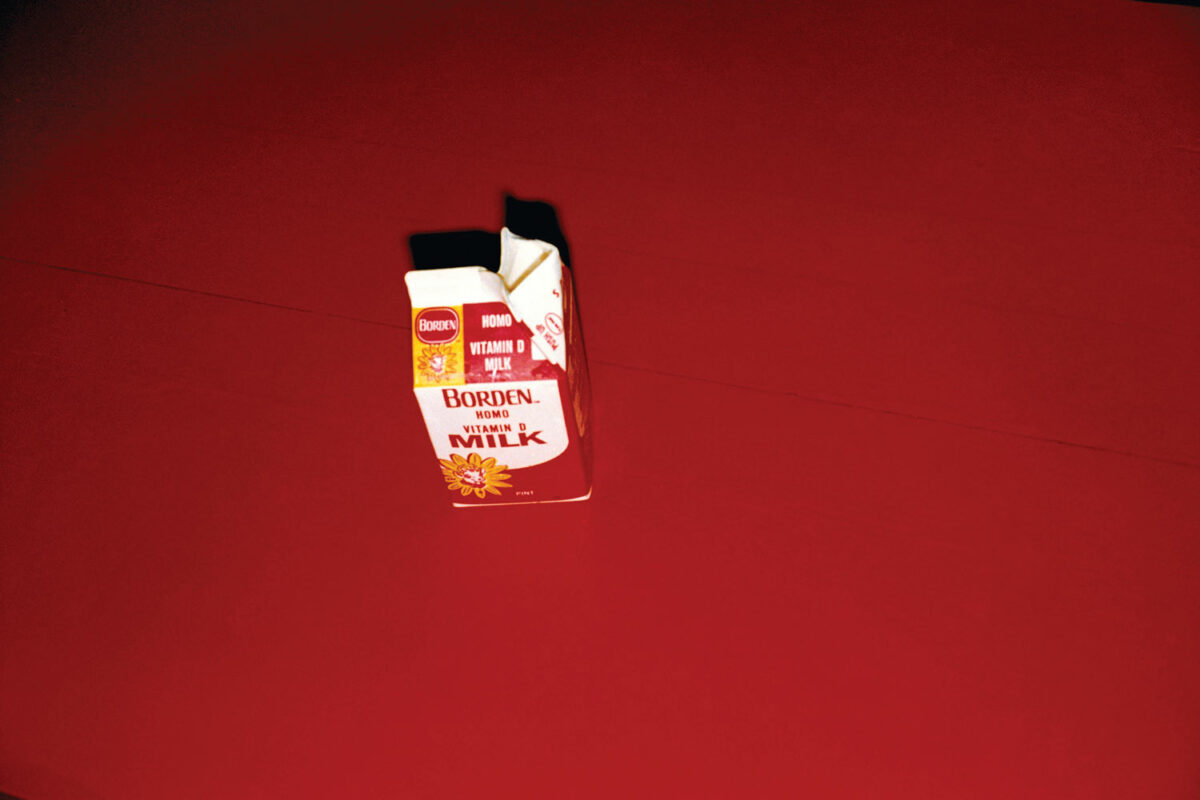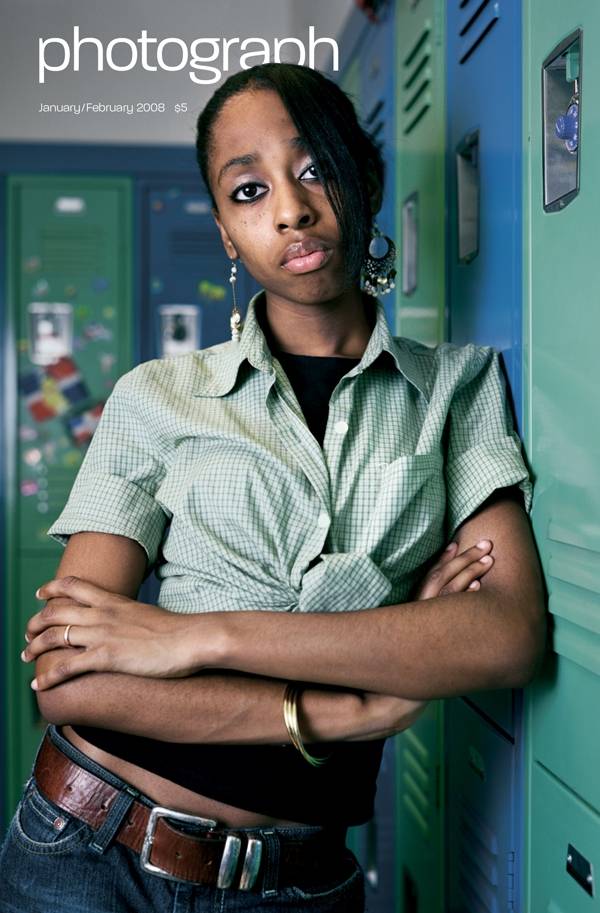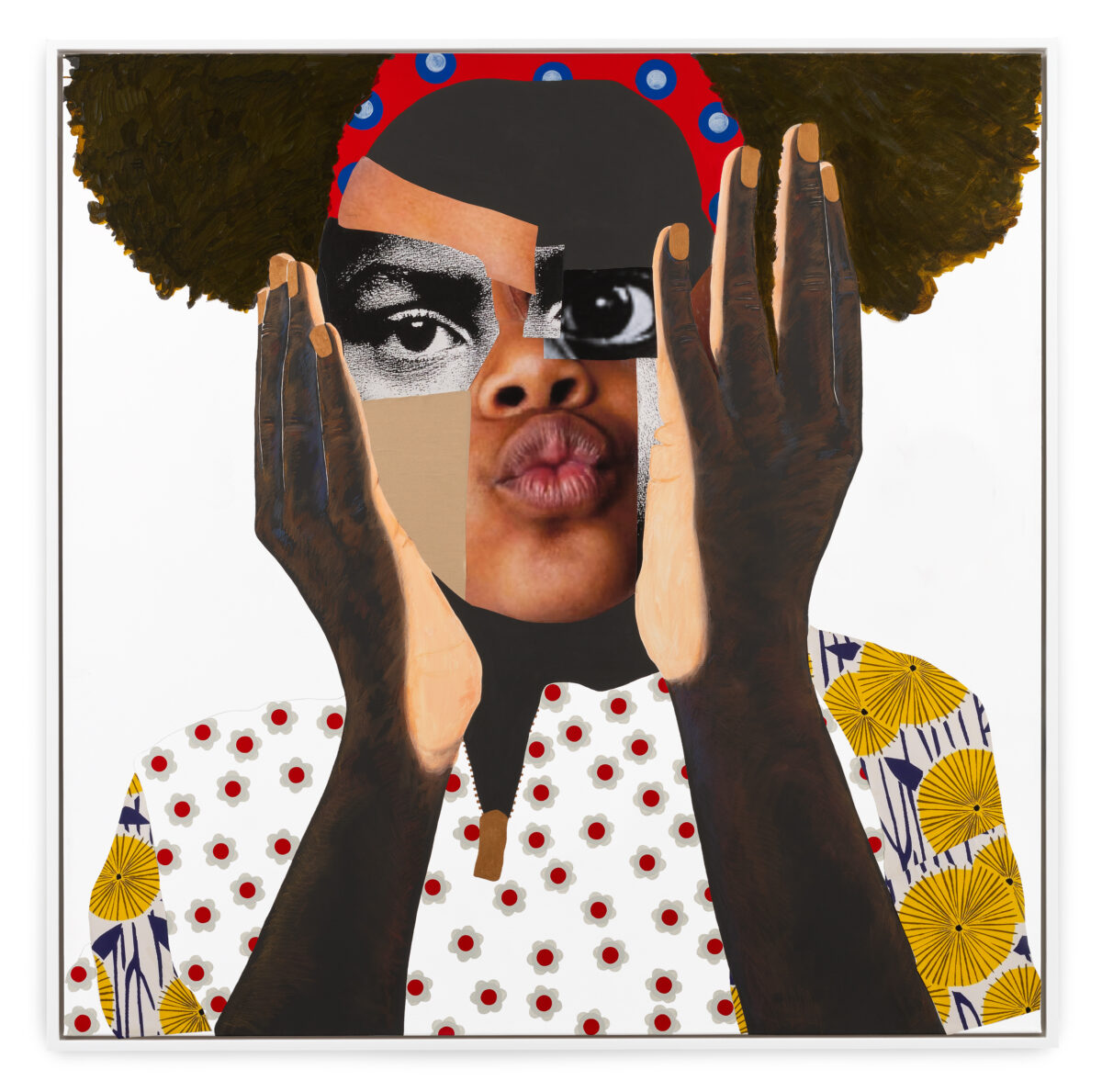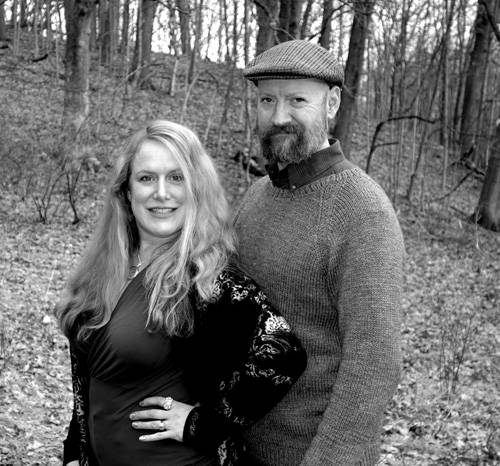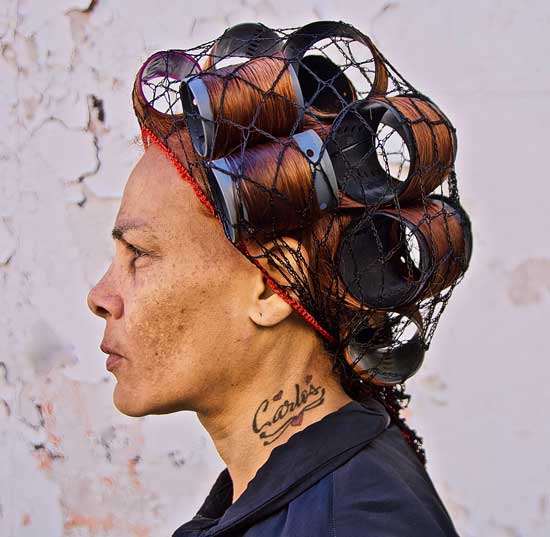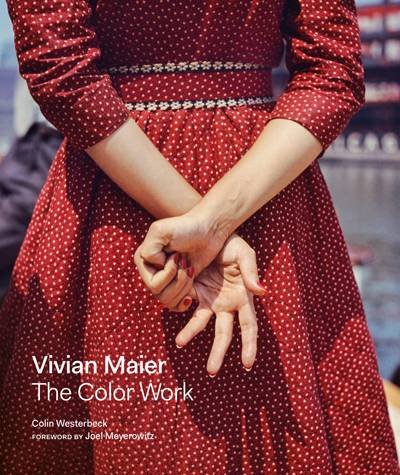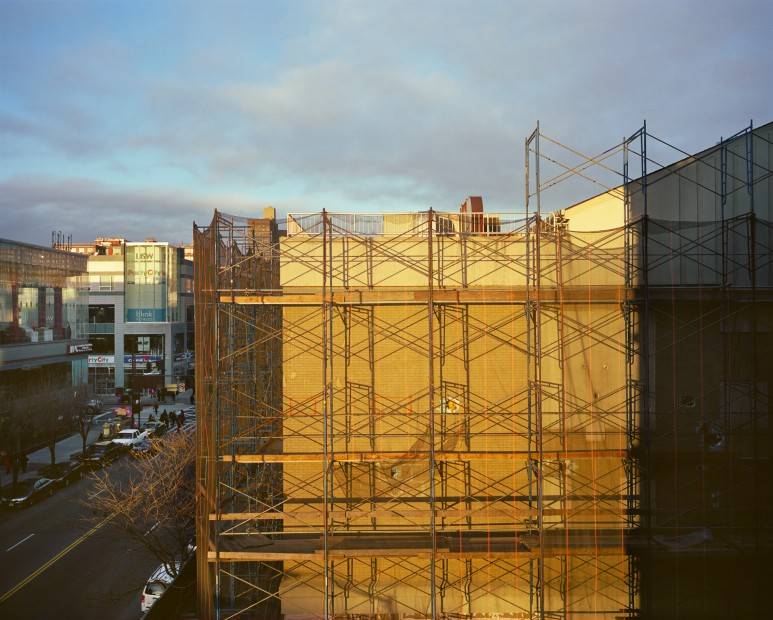

Beloved for his powerful portraits, Dawoud Bey takes a rare detour into urban landscape photography with Harlem Redux, his new series of 14 prints at Stephen Daiter Gallery through December 3. It is a sequel, 40 years later, to his first project, Harlem, USA, which debuted at the Studio Museum in 1979. Bey returns to Harlem to find its vivacious cast of characters replaced by construction workers and tourists, but mostly the quiet streets are devoid of people, an absence weighted with meaning. Harlem Redux is a final chapter; it is an elegy for a place that used to be a community.
Born in Queens and living in Chicago, Bey has roots in Harlem – his parents met in church there. He found his voice in the mid-1970s with a residency at the Studio Museum in Harlem that concluded with the masterful Harlem, USA, 25 black-and-white prints that are also on view in the gallery’s back room. They provide a sense of contrast, because the life and joy of that early work is not found in the new series of large-scale color prints. In the Harlem sequel, Bey has a way of making construction scaffolding look like ruins in the sunset light.
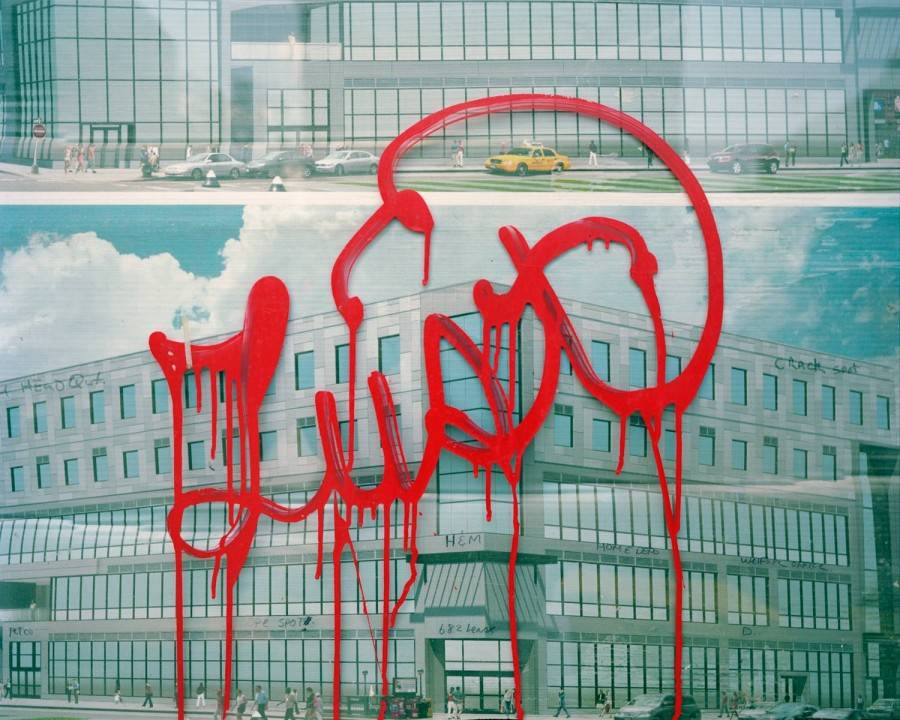

The most poignant images point directly to the neighborhood’s lost population: empty coats on a chain-link fence hang like a group portrait of ghosts in Clothes and Bag for Sale (all works 2016); and a beauty-parlor poster bleached by the sun in Girls, Ornaments, and Vacant Lot. As he did in the series from 40 years ago, Bey captured the present scenes by walking the streets and documenting what he encountered in real-time. The photographs are a reminder that we cannot halt a force like gentrification, but merely record it.

